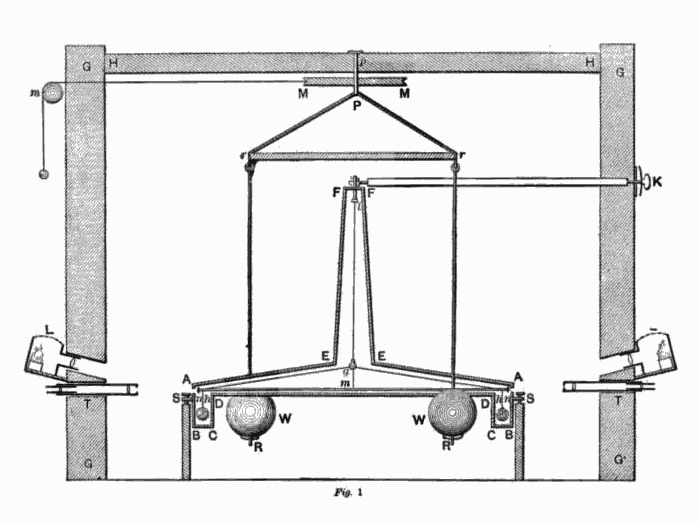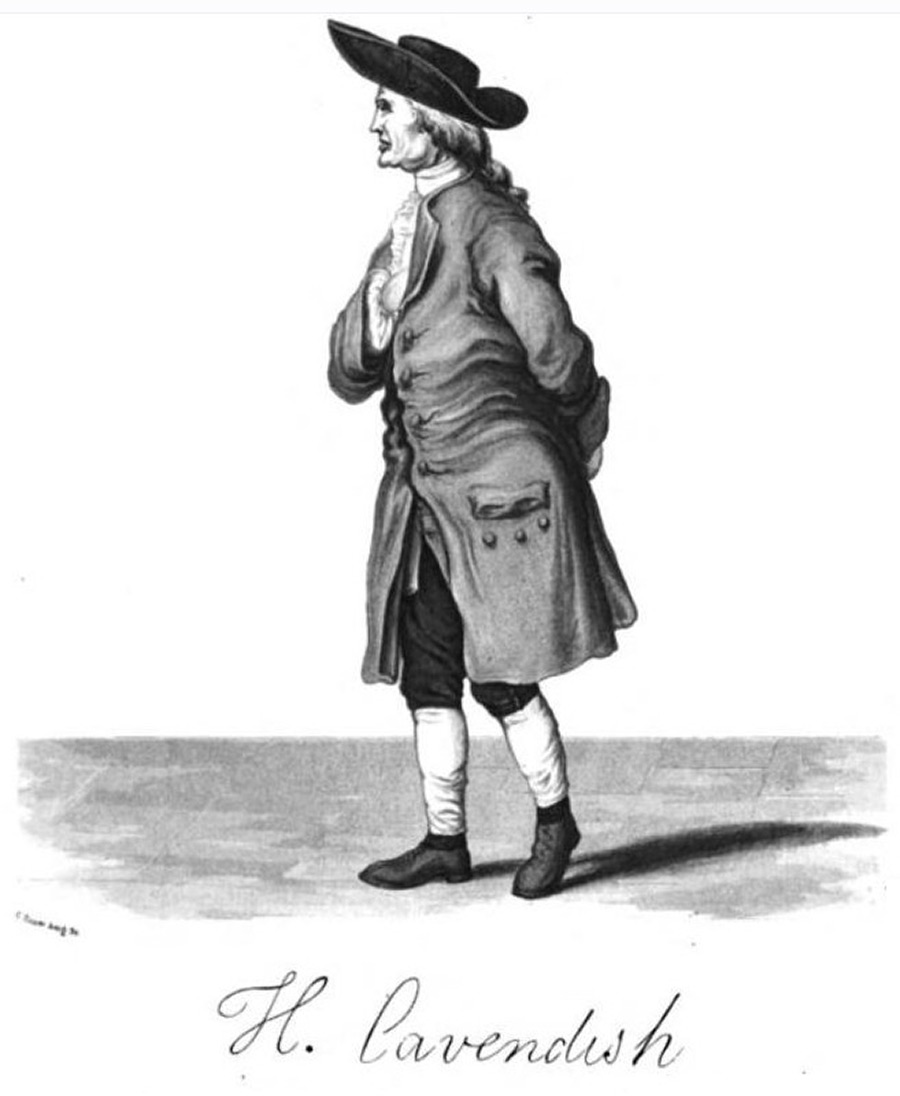22
JANUARY, 2018
As a scientist, if you are going to set out to discover, define or calculate something, you might as well make it something BIG!
Henry Cavendish did precisely that when, from his Clapham Common residence, he determined to calculate the density of the planet Earth.

Vertical section drawing of Cavendish’s torsion balance instrument including the building in which it was housed. The large balls were hung from a frame so they could be rotated into position next to the small balls by a pulley from outside. Figure 1 of Cavendish’s paper.
Source: Wikipedia
Such things can we worked out on the most basic of mobile phone devices now, but in the 1790’s it was an altogether more tricky proposition. Weighing the planet was going to take considerably more than a sturdy set of scales.
Using Torsion Balance apparatus, invented by Englishman John Mitchell, Cavendish calculated the average density of the earth is 5.48 times greater than water.
Cavendish’s computations are with 1% of today’s accepted figures.
Cavendish’s computations were painstaking and remarkably, the conclusion he drew from his Clapham Common home and published in 1798 are still with 1% of today’s accepted figures.
And for the mathematical boffins amongst you keen to know about Earth’s gravitational constant and mass – based on Cavendish’s results, one can calculate a value for G of 6.754 × 10−11N-m2/kg2, which compares favourably with the modern value of 6.67428 × 10−11N-m2/kg2.

Picture and signature of the noted natural philosopher, Henry Cavendish.
Source: Wikipedia
